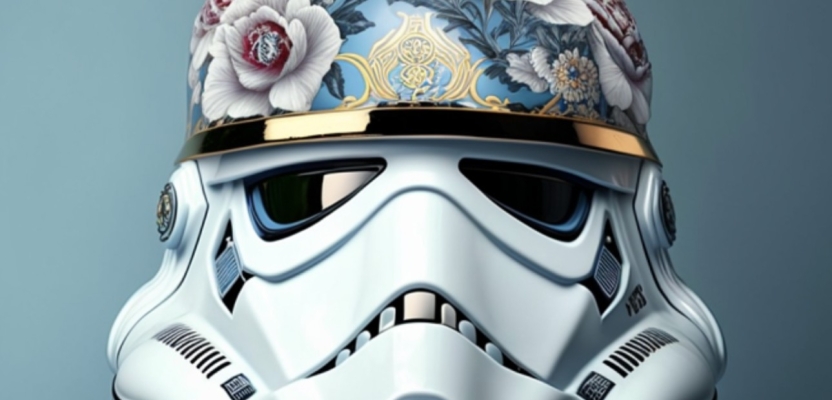It’ll have escaped the attention of nobody that AI has been the chief disruptive trend of 2023. The way things are going, it might end up being the chief disruptive trend of the century.
But while there are so many catastrophising the end of civilisation, or at very least the end of their careers, many more have taken the bull by the horns and learned to live with the machine rather than rage against it.
So, rather than dwelling on the negatives, I reached out to some top creative minds to take a look at the benefits and explore some of the incredible AI tools on the market. Below, my assembled team of thought leaders will detail their experiences of working with the top AI tools on the market and offer some insight into where we could all be going from here.
James Addlestone, Chief Strategy Officer at Journey Further

Getting buy-in for creative concepts can be tricky. But Generative AI can help by showing initial concepts to clients brought to life to explain an idea in context. The key is to understand the constraints and use Generative AI to get an idea to a point where it notionally makes sense, rather than assuming it will provide the finished product.
Generative AI simply can’t conceptualise. It can recognise typical features of cars, but can it ‘draw’ a car that is operationally sound? No - because it doesn’t understand the concept of a car.
AI tools are also handy when it comes to driving inspiration at speed. Sometimes a plethora of left-field ideas is key. By briefing ChatGPT to ask for ideas that combine different industries or personas, the ideation phase can accelerate at pace.
Ask MidJourney to imagine a partnership between Adidas and Harry Potter or ask ChatGPT to ideate around a partnership between SpaceX and Toblerone. It’s all about generating creative outcomes that combine disparate inspiration can inspire human creativity at pace.
Then, of course, there’s the heavy lifting these tools can do in research and editing. Open AI can play an important role in validating ideas. This can take two different forms. Firstly, “reviewing this brief, please explain the pros and cons of idea x” is a key prompt. Secondly, accelerating desk research. In helping to find external data sources that support an idea. As Open AI integrates with more datasets, this will likely replace most of the desk research we do today.
Creativity can be achieved by pushing the boundaries of existing concepts; fusing different disciplines; or reimagining prevailing assumptions altogether. Generative AI isn’t the answer to our creative challenges, but there is no reason to believe it can’t be used to bolster all three areas of human creativity.
Jen Macdonald, Marketing Manager at Evolved Search

Whether you love it or hate it, AI is here to stay. The capabilities of AI are limitless, which means it can offer a plethora of advantages for people working within the digital space. Contrary to popular belief, AI will not take over from human activity, even if it makes us more efficient so less people are required to do a particular job. There are several intelligent tools that are making mundane tasks a thing of the past and workloads more streamlined.
One of the main things AI can help with is sales prospecting, AI can determine where your market is looking and what their needs are. By understanding this, sales representatives can take a more targeted approach to really understand how they can help prospects with pain-points. This approach will not only save time but will align approaches earlier in in the buyer journey.
Another way AI will help streamline digital processes is during ideation, creatives are often faced with clients in similar sectors and during long-lasting relationships ideas can become challenging. AI can help give teams a prompt to inspire their campaigns and get a fresh take on industry trends.
So, whatever the use, AI is a tool that can take our digital capabilities to the next level. Rather than shying away from, it should be embraced.”
Michael Kneebone, Creative Director at Social Bull Media

Remember the birth of the internet? It parallels the uneasiness and curiosity we see today with the acceleration of AI. Adopting AI tools will be inevitable. Although we haven’t done it just yet in the creative sector.
The Adobe Creative Cloud pipeline feeds our interest at the agency, as their AI updates will roll out to their large subscriber base of creators. Adobe Podcast (although still in beta mode) shows the enormous potential for intuitive audio editing.
The user-friendly capacity of AI to remove the background noise from, let’s say, an office setting, essentially converts every office environment to a hybrid podcast studio. Brands and agencies, get ready for more podcasts on your platforms.
There is obviously a sense of fear around AI, but it can support the creative process with content ideas at speed alongside our imagination. It's a new and exciting phase, and as long as we’re transparent about AI, we have to believe it’ll improve our future creativity
Bill Lyne, Head of Copy at Fox Agency
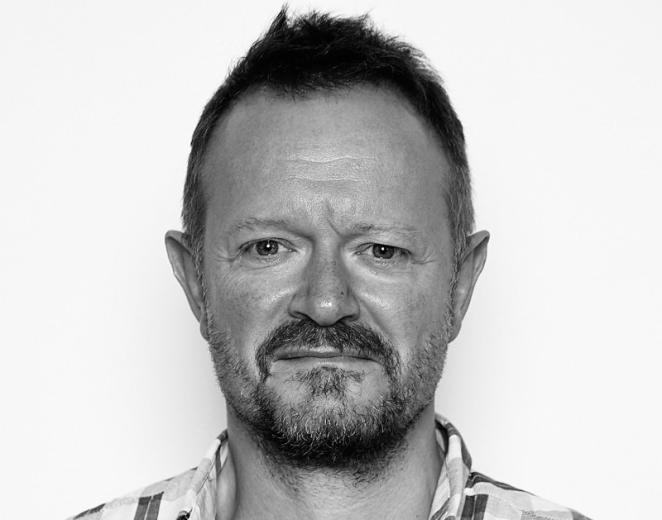
It’s indisputable that AI will play an ever-bigger role in creating assets both in terms of imagery and content. From a writing point of view, the copy team have been busy experimenting with all the different platforms and how they can best be applied to live briefs. But visually, we’ve already had our AI baptism of fire.
For a recent pitch, the creative concept called for a number of surreal images. These could have been created by manipulating stock-shots or by a skilled visualiser. But using Midjourney, our art directors were able to generate a unique set of executions that really brought the big idea to life.
Yes, it took a lot of prompts, careful design input, and some last-minute retouching magic to crack the final versions, but the impressive photorealistic results achieved against the cost and time of doing it conventionally speak for themselves.
AI is certainly a gamechanger. However, it’s equally true that any such project still requires careful steering by skilled designers, and the images produced while remarkable are – as yet – no match for the work of a skilled photographer. But for pitch visuals, AI has more than proven its worth, and is now an essential part of our agency toolkit.
Matt Iliffe, CEO at Beyond

At the moment, AI tools are playing a significant role in helping our teams speed up time-consuming tasks and adding new efficiency to our processes, especially when we are working against a tight deadline – for example, when preparing for a new business pitch.
Gen AI in client work can present challenges, so most of our exploration has been in pitches, concepts, demos and MVP products. We encourage our teams to embrace the fast-moving world of Gen AI.
To keep the agency on track, we’ve developed six principles that provide guard rails covering transparency, security, ethics and legal. Our intent is to use Gen AI as a creative tool driven by creatives, not as a replacement for them.
ChatGPT and Midjourney are the tools we use most frequently. ChatGPT has proven invaluable in accelerating the research process, helping locate quantitative data-based research on topics relating to our prospective clients’ areas of expertise that we can use as proof points to back up our approach.
We’ve used Midjourney to generate conceptual imagery for sales decks that otherwise would’ve taken hours of research to locate and potentially been costly to purchase.
Richard Pinder, CEO of Rankin Creative

Every day we are reading what feels like a veritable tsunami of AI speak. Whether it’s BT talking about losing what sounds like half their UK workforce or many fearing an increased risk of a Skynet takeover.
But of course on a day to day level, it is more prosaic, and just like all the other cool new-at-the-time tools we all use every day to help us get more done in a better way. And for the creative industries, it should definitely be viewed that way.
When the Pet Shop Boy’s prolific writer Neil Tennant speaks about using AI to fix a song he abandoned in 2003 due to writers block, we immediately have our poster for how writers are using AI in agencies. Chat GPT and now Bard are going to be exponentially more valuable to provide copywriters with a starting point that is not ground zero.
In our past, so much advertising and communications writing has required the originator to write their first and second (or many more) versions to get the clichés and obvious stuff out of the way before embarking on fresh thinking.
Using AI to provide you with a sharp summary of the best current thinking out there, so you can build on that, is a very effective way to jump to the more productive part of originality that our profession demands. It also protects the writer in that something they think is original is sometimes not. This way, they get the synthesis of that before starting.
For the art directors, it is a bit more nuanced. Watching a gifted designer using Midjourney to create photorealistic designs, in a fraction of the time it used to take, is a real kick.
But Midjourney is not a cakewalk to use well - it takes some learning - and for sure using artwork that has been created from AI (but you know not from where) can be a vexed issue in terms of passing off/IP. It’s great for illustrative work, to sell ideas in, no question. Just don’t be tempted to use the output without thought in public!
A new tool (or tools) that cut down the development stages of writing and design, that cuts down the time spent on illustrative work for sharing an idea, that essentially automates those less valuable steps - has to be wholly welcomed.
What it should not be confused with (so far at least) is a substitute for human imagination, ingenuity and ability to make random but engaging cultural connections, which is the thing our clients are paying us for.
Jack Gullen, Creative Technologist at Seymourpowell

With AI tools now integrating (in one form or another) with many industries, it may appear that everyone is trying out ChatGPT as a new form of web search. Whilst, in some cases this is happening, it is the optimisation of tasks and the speed in which AI tools, such as ChatGPT, can generate content that allows them to transform from a new tech gimmick to a powerful assistant.
Currently, AI can’t always solve 100% of a problem or deliver a project from start to finish, but it can help to inspire creatives by removing some tiresome aspects of a role. Why write a thousand lines of code when most of it can be generated in seconds and then tweaked to fit the needs of the software?
At Seymourpowell, we’ve been utilising AI in various aspects of our creative process. Largely, in assisting with ideation and inspiration for project kick offs: pulling together mood boards with the help of DALL-E or Midjourney, for instance.
More recently, however, Adobe’s newly unveiled suite of AI tools (Adobe Firefly) are becoming more tailored to making life easier for everyday designers. Being able to recolour vectors or use the generative fill tool to add to images are both helpful additions to software we use every day.
Whilst it is still early days for Firefly, the potential is clear – with many upcoming features designed to make creative work easier to carry out, allowing more time to be spent on ensuring the best possible output is created.
Adobe Premiere Pro, for example, will soon have the ability to generate storyboards based on a transcription and colour grade from a text prompt. If successfully implemented, this has the potential to reduce days in the editing pipeline.
As these new features roll out, we’ll be keeping a close eye on the latest developments, implementing the most useful AI tools as they become available.
Jono Hunt, senior creative technologist at Wunderman Thompson UK
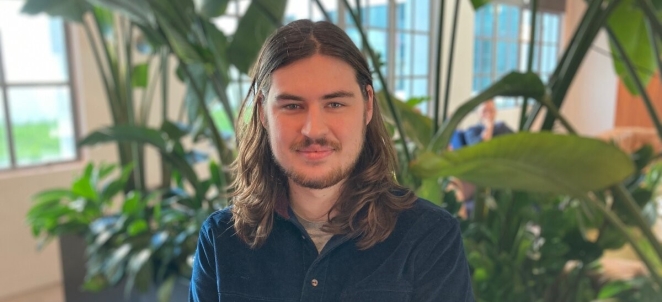
No doubt everyone who responds to this will speak about the incredible and unexpected results they’ve been getting from generative AI models— especially as we see such fast-paced improvements to more mainstream platforms, such as plugins and image generation in Microsoft’s Bing Chat, OpenAI’s multimodal models capable of comprehending visuals as well as text in conversation, and the striking results from Midjourney, Dall-E and Adobe’s Firefly (OMG generative fill), Stable Diffusion and Runway ML’s models among many others.
What’s really exciting at the moment is the integration of these models into the tools we’re already using, and the huge number of new platforms enabled by APIs offered by OpenAI and others and our data science team are already creating incredible tools to drive efficiencies for us in the agency, and for our clients who have an incredible appetite for testing and learning in this space.
It’s worth noting that there’s still a lot of education to be done on AI especially outside of more mainstream content generation. AI-powered task automation, human representation, insight extraction, decision making are all evolving and, whilst maybe not as eye-catching as Midjourney’s Discord, they’re equally as important for our client’s businesses.
Amy Ramage, Founder, MD and Creative Director of Célibataire

In the creative industries, it’s impossible to avoid debates around the use of AI for image and content creation. While some argue that it’s ‘unethical’ and fear it replacing jobs, there’s no denying that AI offers endless creative possibilities, which are positively game-changing for creativity.
Ecommerce is one sector I predict will be transformed by AI in a matter of years. In our work with luxury brands, we’re increasingly seeing AI utilised through the use of NFTs, AR and VR experiences, pattern production as well as hyper personalised online user experiences and offers.
Soon AI will be capable of building a virtual store tailored to each individual consumer based on their preferences. In the fashion industry, we’re likely to see brands using generative AI tools such as ChatGPT to enable shoppers to model clothes and accessories before deciding whether to buy, resulting in a hyper-personalised ecommerce experience and increasing brand engagement and loyalty.
While we might be a little way off this becoming a mainstream shopping experience, a personalised ecommerce journey is no longer an option, it’s a must-have. Consumers demand relevancy and AI tools are being used to ensure they get that.
At Célibataire, we experiment with Wedia for image creation and wider concept generation. We don’t see this as a negative thing, on the contrary, AI enhances our creative capabilities and sparks ideas. AI is not a replacement for creative professionals, as it requires our input to work.
However, creative roles are likely to evolve to work more in tandem with AI, because its creative potential and the speed in which it works can’t be matched in human terms. Ultimately AI will allow creatives across all disciplines to be more effective and efficient at what they do. And from where I’m standing, with an inbox full of creative briefs, that can only be a good thing.
Ryan Storrar, CEO of EssenceMediacomX

AI has the potential to transform the way we work as it offers the opportunity to gain a competitive edge and drive higher levels of productivity; it should be embraced as a valuable tool of efficiency and not become a distraction. Its application is set to significantly disrupt creative and media industries – companies that don’t invest now will be left to be disrupted.
To fully harness its power in transforming the future of work, we must focus on reskilling employees in the technology. By providing education and training, staff are better equipped to adapt to this new era and can leverage it more effectively. We’re only limited by our imaginations and the potential to upskill our workforces to ask AI the right questions.
While creativity needs the input and insight of humans, AI’s potential to transform creativity through a new lens is only limited by our own imaginations and what we ask it to do. By bringing our unique insights and expertise, AI will augment and enhance our capabilities, enabling us to achieve more than ever before in an ever-evolving business landscape.”
Mark Lees, Creative Director at krow Group
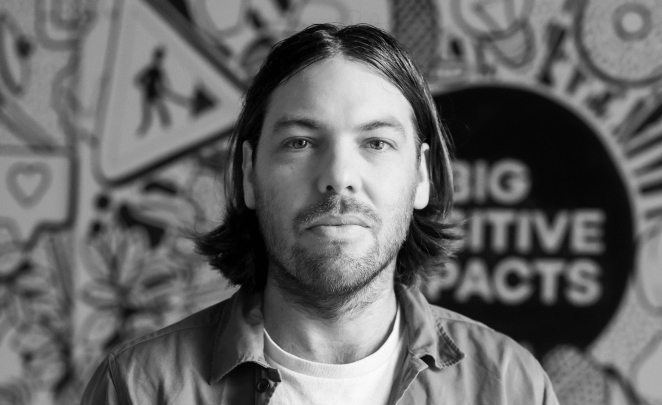
Let the robots in but don’t let them take control. There’s a certain hesitation when it comes to the word ‘AI’. Is it going to replace me? What if the clients get hold of it? But this is the kind of digital tool we’ve all been craving for years. Like going from typewriter to laptop it has the ability to completely change your workflow.
It’s the partner we’ve been waiting for…your Peggy to your Don shall we say. And that’s exactly how we should see AI not as a threat but as a new collaborative member of the team. A shortcut to the creative process. On ChatGPT you can research at speed, get ideas before the idea.
On Midjourney you can express a vision in seconds, moodboard entire worlds in a click. BUT it’s not a shortcut to an answer, that still lies in the intelligence of the human brain; to spot the potential in the AI results. On ChatGPT 90% of what it spouts will be complete garbage but it’s having the ability to notice a nugget of info that could help you when digging for a thought or idea.
You’ll slowly realise that asking the system the right questions is the key to getting useful information. What you’re essentially trying to do is trick it to get more unusual creative outcomes - that’s where the interesting bits are. The rest is up to you.
Cameron Reid, Brand Strategist at FutureBrand
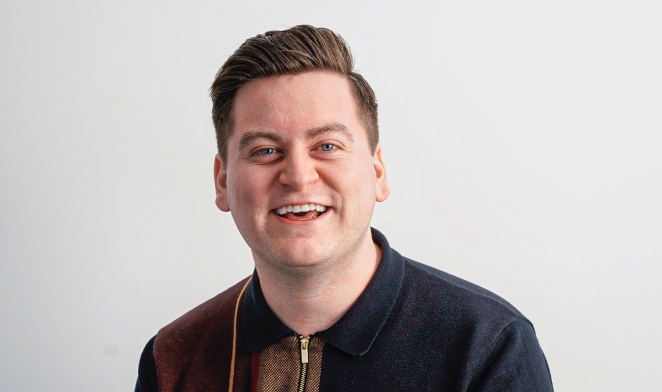
AI is evolving at an exponential rate and those who don’t upskill accordingly risk falling behind. That’s the real threat to creative jobs – the fear of change and subsequent paralysis, not the technology in itself. From a personal and professional perspective, I believe AI is going to redefine the role of a brand strategist and help elevate it further.
For example, one of our key responsibilities is to act as the voice of reason between organisations and their consumers. A big part of our job in that sense is to understand the changing needs and wants of consumers in a given context. We’re constantly gathering and analysing data to better consult our clients.
That’s one way AI could play a significant role. Strategists are able to not only collect an unprecedented amount of behavioural knowledge, but also to digest it at a much faster pace. This newfound agility has the potential to save hours spent on consumer research, which can then be relocated into other, more creative tasks.
That’s not to say that AI will completely replace humans. After all, part of being able to use the technology to your advantage means you still need a strong degree of critical thinking and emotional intelligence to contextualise the data and interpret it correctly – something inherent in and unique to the human race.
It’s also crucial that we’re cautious of the reliability and credibility of data collected through AI tools, considering there’s a lot of progress that needs to be made in terms of regulations. Then, it’s about making sure that whatever insight formed from AI – whether it’s from just one or a variety of tools – is holistically embedded across the whole brand ecosystem.

